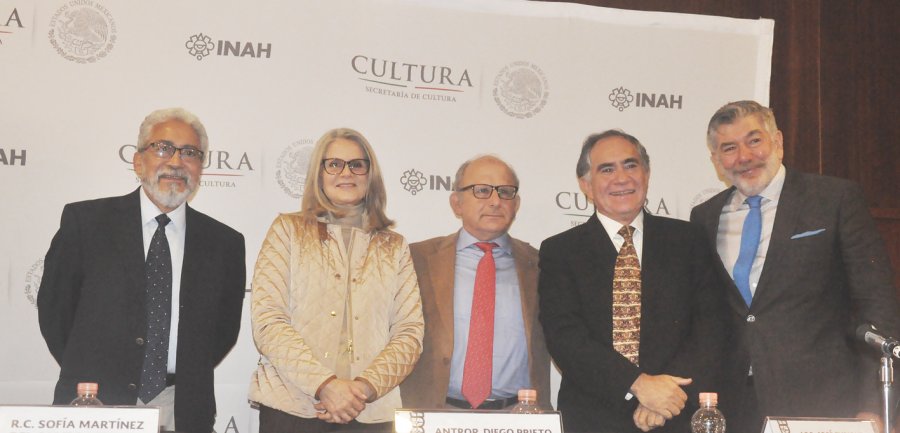Noticias
The Maya Codex of Mexico, the oldest legible manuscript in America
August 31, 2018After finishing a series of exhaustive studies and tests carried out by an interdisciplinary group of researchers, who systematically approached under different disciplines of knowledge with the use of technology and the most developed techniques, the analysis of the Grolier codex, it was concluded that the now Maya Codex of Mexico is legitimate and stands out for being the oldest readable Mesoamerican manuscript in America.
Anthropologist Diego Prieto Hernández, general director of the National Institute of Anthropology and History (INAH, for its acronym in Spanish), explained that the formerly known as Grolier Codex "is an authentic pre-Hispanic document that refers us to the symbolic universe of Mayan culture, which could be dated in the early post-classic period”.
It will therefore be incorporated into the Memory of the World program, according to the nomination granted by UNESCO in 1977 to the Codex Collection of the National Anthropology Library of INAH.
He recalled that it was in October 2016 when the INAH formed a comprehensive team among the scientific community with the purpose of carrying out an exhaustive study of the manuscript known until then as Grolier Codex, now under the protection of the Museum of Anthropology.
"Despite the fact that for years several academic and scientific analyses had been carried out on it, some doubts and determining aspects about its materiality and its symbolic and ritual content had yet to be resolved”.
"The first doubts that arose by the appearance of the Codex in the 1960s were due to a lack of knowledge of its original context”.
When the document was exhibited at the Grolier Club in New York in 1971, the controversy between the community intensified due to its appearance and the singularity of its content, both because of similarities and differences with the Mayan Codices of Dresden, Madrid and Paris, which are the pre-Hispanic codices recognized until now as Mayan.
"It’s a document with unique characteristics that make the discussion more complex".
During the following 45 years, academics from several disciplines carried out multiple analyses of the then Grolier Codex with positive results that clarified some questions, but others remained unresolved.
It was in 2017, within the institutional research project of the Maya Codex of Mexico, before Grolier, when specialists from INAH, the National Autonomous University of Mexico and the University of Colorado Boulder applied the necessary studies to the document to clear up doubts related to its materiality and ritual content.
"This is how at the conclusion of the project, the INAH is honored to make known to the general public and to specialists the coincident results of the different fields of knowledge that situate the Mayan Codex of Mexico, which will now be called so, in the early postclassic, and confirm it as the oldest American manuscript known until now”.
The comprehensive multidisciplinary project was headed by Dr. José Enrique Ortiz Lanz, national coordinator of museums and exhibitions; Antonio Saborit, director of the National Museum of Anthropology; Baltazar Brito Guadarrama, director of the National Library of Anthropology and History, and Sofia Martinez del Campo, researcher at CNME.
Doctor Baltazar Brito Guadarrama and the researcher Martínez del Campo explained that the results of the research offer a new reading of the ritual iconographic content, provide dates of rituals in which the codex could be used and confirm that the style of the codex is original, a unique manuscript of its time.
It also establishes a precedent for the study of the early postclassic that has been little studied; it offers a knowledge to consider it an archaeological good that confers it a special treatment according to the Law, and offers a great knowledge for archeology and astronomy that confirms all that has been said about the movements of venus.
From the institutional research project derives the realization of the symposium held on August 30-31 in the Jaime Torres Bodet Auditorium of the National Museum of Anthropology which aims to publicize the results obtained by specialists under a scientific rigour document.
In order to disseminate the results to a wider public, the exhibition El Códice Maya de México will be opened on September 27, as part of the XXIX International Book Fair of Anthropology and History (FILAH, for its acronym in Spanish), which will take place from September 27 to October 7, in the facilities of the Museum of Anthropology.
In this context, the book El Códice Maya de México, formerly Grolier, will be presented in a facsimile edition that will include the comprehensive results of the research project.
Mexico
